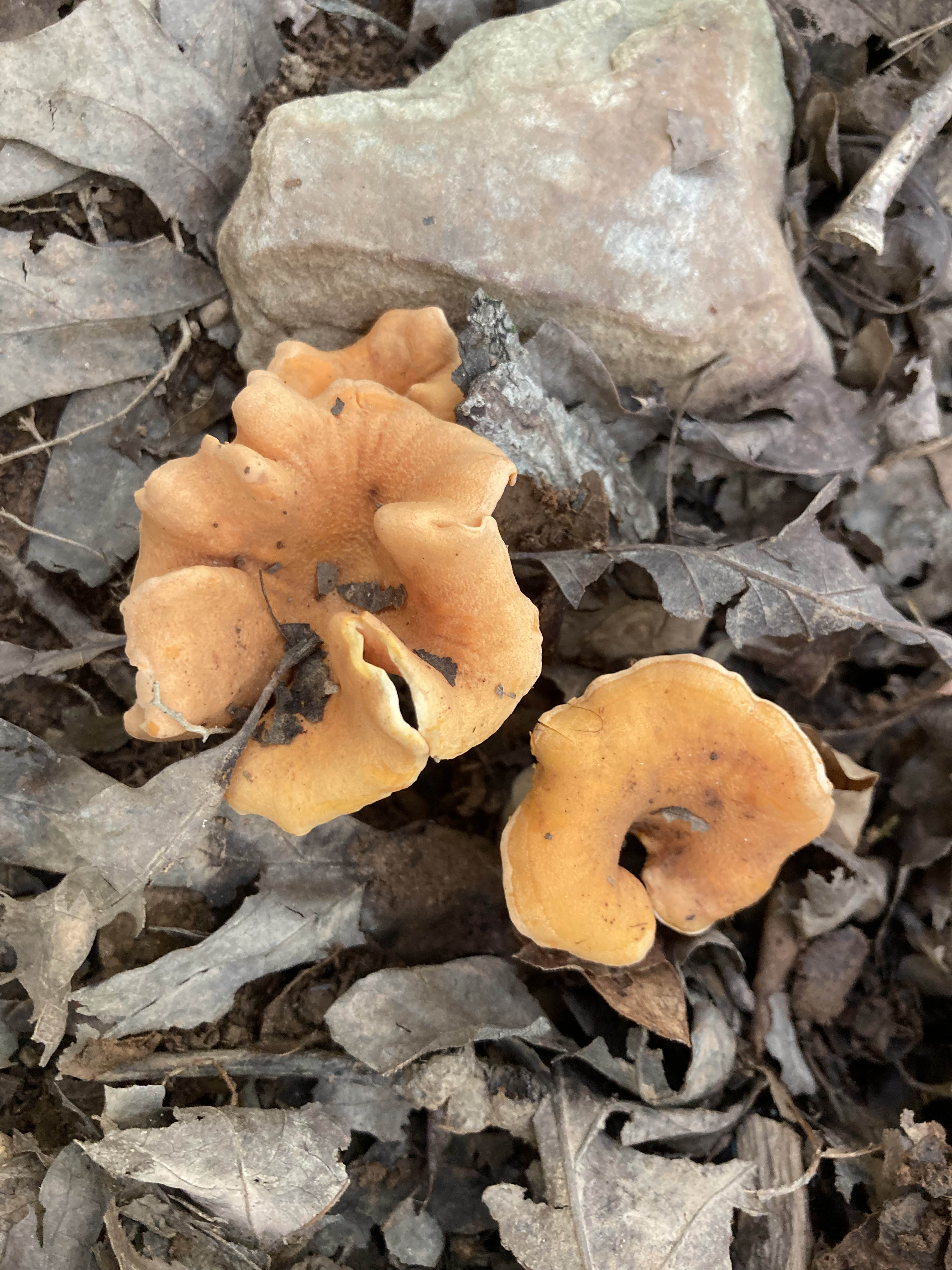Fungi Kingdom
Contact
University of Arkansas System Division of Agriculture
Cooperative Extension Service
2301 S. University Ave.
Little Rock, AR 72204

Fungi Kingdom
While mushrooms can appear at any time during the growing season, late summer and early fall rains bring them on with a flourish. Strolling through my friend’s woodland deep in the Ozarks a few days ago we were amazed at how many kinds of mushrooms had sprung up after a recent rain. Amongst them was a nice harvest of orange chanterelles which soon made their way into her frying pan seasoned with butter and garlic.
Mushrooms are ever-intriguing because of their almost magical appearance, the beauty of their colors and sleek form and because, while many are edible, others will kill you graveyard dead. Over 14,000 species have been recognized around the world growing in any environment where plants grow. They are classic saprophytes – organisms that live on dead or decaying organic matter.
Studying mushrooms is a branch of science called mycology, which is a subset of the larger, better-known field of microbiology. Most of the 21,000 microbiologists in the US are employed in some form of food safety while the relatively rare mycologists are academic types associated with university biology or botany departments.
Back in the 1960s when I took my basic biology and botanical training, the world was simple. There were four kingdoms of life: animals, plants and two types of single-celled microorganisms, those with or without a nucleus. But about that time as the meaning of Watson and Crick’s DNA discoveries was becoming better understood, taxonomists began reconsidering how life should be organized. The basic goal of these organizational schemes is to group like organisms together in such a way that they can theoretically be traced back to a common ancient ancestor. For some reason, I’ve always found these higher-level schemes of classification interesting even though their importance in day-to-day life is pretty meaningless.
Today there are four or five (well maybe three, six, seven or eight) kingdoms of life and – depending on the authority – two or three superdomains above the kingdom level. Linnaeus established the idea of kingdoms of life in 1735 when he devised his binomial classification scheme and arranged plants into families, genera and species. Recognizing that the kingdom model was insufficient for an inclusive classification scheme, two empires were added above the kingdoms in the 1920s. In the 1970s five kingdoms of life were proposed with fungi separated from the plants.
But with the adoption of RNA and DNA taxonomic techniques in the late 1970s, it became apparent that plants, animals and fungi are more closely related to each other than they are to bacteria, so the shuffling of the deck of life continued. Current thinking – and by no means is it universally accepted – uses superdomains to separate life into organisms with cell walls and those without (viruses for example). Life with cell walls is then divided into two domains; the Prokaryotes (single-celled organisms that lack a cell nucleus) and the Eukaryotes (organisms with a nucleus enclosed inside a nuclear membrane). The Eukaryotes are then subdivided into four (sometimes five or more) kingdoms. The simplest four-kingdom model recognizes animals, plants, fungi and Protista (a miscellaneous group that have nuclei but obviously aren’t plants, animals or fungi).
Unfortunately, none of these schemes are bulletproof. Some of the extremophiles, bacteria-like organisms found in oceanic volcano vents and similar other-worldly environments, don’t comfortably nest in this arrangement. But redrawing these classification schemes is a popular parlor game amongst academics, so let the fun continue.
None of this need concern the mushroom hunter as you shuffle through the woods after a soaking fall rain. Their beauty and charm are there for all to see and enjoy. But foraging for edible mushrooms can be a dangerous and deadly game. Remember the old adage: “There are no old, bold mushroom hunters.” Only go mushroom hunting with someone who knows what they are doing, and if in doubt, assume the mushroom is a deadly toadstool.
